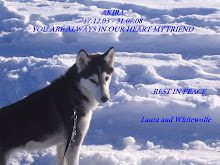
Big Bow (Zepko-ette or Za-ko-yea),
Kiowa chief, was born in 1833 on Elk Creek, Indian Territory.
He was descended from a line of prominent war chiefs
and inherited his name from his father and grandfather.
From his father he learned at an early age
to be a warrior, and by the time he was eighteen
he had been on two raids into Mexico.
In 1851 Big Bow was made a war chief
but lost popularity that winter after eloping
with the wife of another warrior. What was more,
he offended many Kiowas with his scornful attitude
toward the tribal religion. He was especially
skeptical of medicine men, particularly
the prognostications uttered by Maman-ti
through his inflatable "medicine owl."
Often Big Bow asserted that his own strength
and courage, not the aid of a bird,
would ensure him success in war. Consequently,
he frequently went on raids either solo
or accompanied only by one or two others.
On a foray into New Mexico in 1855,
he almost single-handedly captured several ponies
and took a Navajo scalp. The following spring,
after other tribal leaders expressed doubt
about his boasts, he took another chief, Stumbling Bear,
back with him to the scenes of his escapades in New Mexico.
He frequently rode with the Quahadi band of Comanches
on the Llano Estacado and became familiar
with the areas between the Pecos River
and the Rio Grande.

Big Bow's high rank was indicated by the fact
that his leggings were fringed with human hair.
He took part in raids into Texas and New Mexico
during the 1860s and led one against the Utes
in southern Colorado in the summer of 1869.
Although he reportedly was an accomplice
at the Salt Valley attack on May 17, 1871,
he evaded arrest at Fort Sill.
With his friend and fellow chief White Horse
he staged the attack on the government wagon train
at Howard's Wells on April 20, 1872,
and the attack on Abel Lee and his family
near Fort Griffin on June 9. Thomas Battey,
a Quaker missionary, later recalled Big Bow's
"treacherous and ferocious countenance."
At the outbreak of the Red River War in June 1874,
Big Bow attempted to talk the Kiowa war faction,
led by Lone Wolf and Maman-ti,
into staying holed up in the canyons
along Elk Creek. But when Maman-ti's
"medicine" predicted complete safety for the group
in Palo Duro Canyon, they voted to go there.
Big Bow thus participated in the siege
of Lyman's wagon train on September 9-14
and fought a brief battle with Col. Ranald S.
Mackenzie's Fourth Cavalry at Palo Duro
on September 27.

Sometime before Mackenzie's attack,
Big Bow had disappeared briefly into the Llano Estacado,
accompanied by Maman-ti's adopted son,
the white captive Tehan. He then reappeared
with Black Horse's band of Quahadis after killing
and scalping a cavalry soldier. When defeat was inevitable,
Big Bow was among the first of the Kiowa leaders
to surrender in February 1875. It was reported that
just before coming to the agency he killed Tehan
because he was part white, but Big Bow
and his family declared that Tehan had died
of thirst on the plains. Big Bow readily submitted
to the federal authorities and through the influence
of Kicking Bird was enlisted as a scout to help
bring in other bands. His cooperation kept him from going
to prison in Florida with other Kiowa chiefs.

He subsequently emerged as a leader in his tribe's
difficult adjustment to reservation life.
On occasion he made friendly visits to the Utes
and Pueblos in New Mexico. He and his braves often
bargained with white traders and ranchers,
including James A. Whittenburg, whose son George
he once tried to adopt for a price of seventy-five horses.
In 1886, with agent Jessie Lee Hall's permission,
Big Bow led three Kiowas west to recover horses
stolen by rustlers. He and a companion named Pay-kee
overtook the thieves, killed one of them,
and successfully recovered the stock,
even though they had only a few rounds of
ammunition with them. With his family Big Bow
settled in the Rainy Mountain community
and during his later years was converted
to Christianity. One of his sons, Dom-ai-te,
was noted in the tribe as a horse racer.
The date and place of Big Bow's death are unknown.
Several of his descendants still resided in
the Anadarko area in the late twentieth century.

Toksa ake
~U-ne-ga-wa-ya~

























